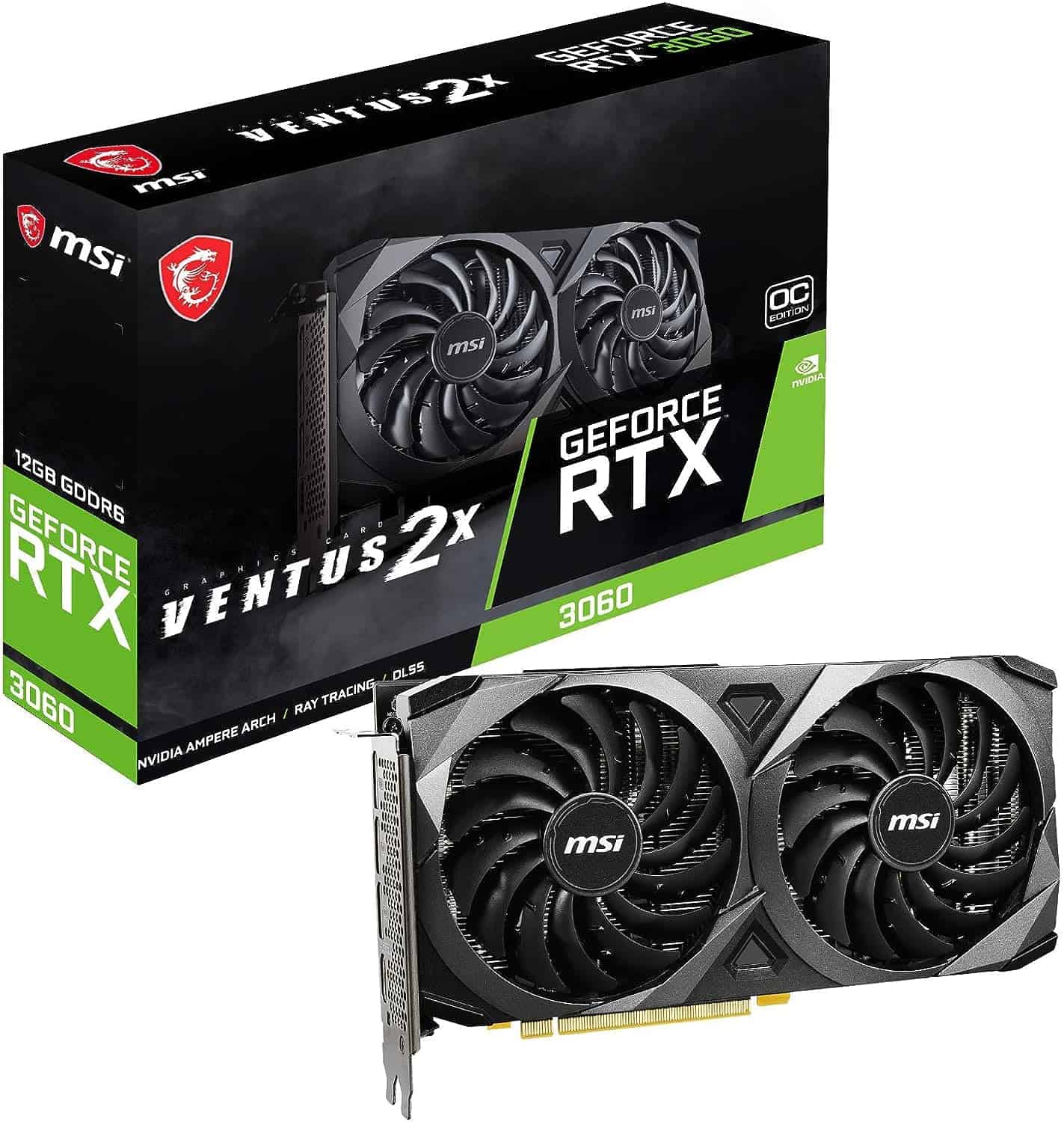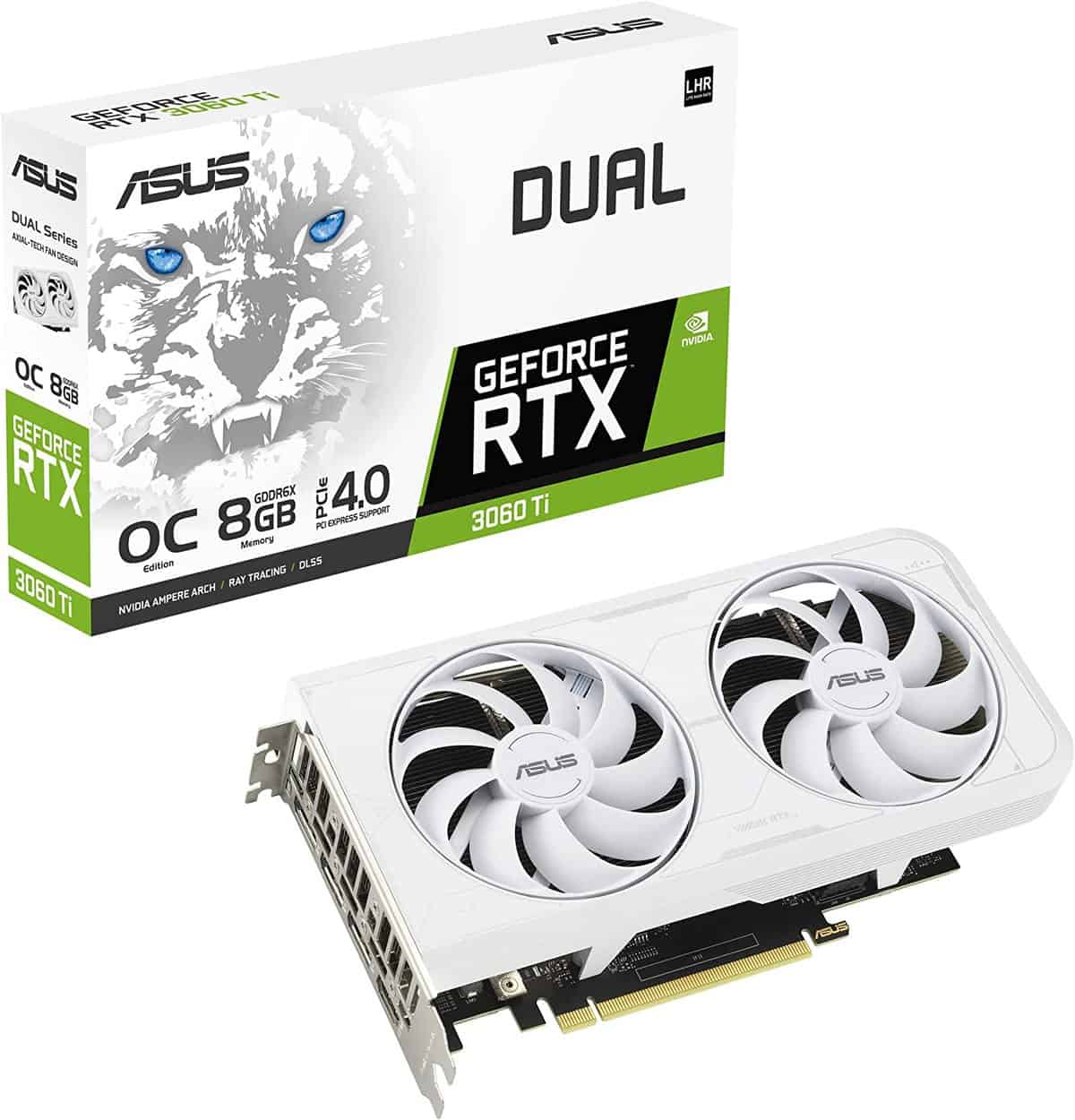Nvidia RTX 3060 vs Nvidia RTX 3060 Ti – Is there much difference?

Table of Contents
Nvidia's RTX 3060 and RTX 3060 Ti are some of the most popular graphics cards out there right now. The RTX 3060 Ti has slightly more CUDA and tensor cores than the RTX 3060, but does the core count difference create a significant performance gap? We take a deep dive into the Nvidia RTX 3060 vs Nvidia RTX 3060 Ti to determine which GPU comes out on top.
Looking for more Nvidia RTX 3060 content? We have the Nvidia RTX 3050 6GB vs Nvidia RTX 3060 comparison as well. Be sure to check it out.
Prime Day may have closed its doors, but that hasn't stopped great deals from landing on the web's biggest online retailer. Here are all the best last chance savings from this year's Prime event.
- Sapphire 11348-03-20G Pulse AMD Radeon™ RX 9070 XT Was $779 Now $719
- AMD Ryzen 7 7800X3D 8-Core, 16-Thread Desktop Processor Was $449 Now $341
- Skytech King 95 Gaming PC Desktop, Ryzen 7 9800X3D 4.7 GHz Was $2,899 Now $2,599
- LG 77-Inch Class OLED evo AI 4K C5 Series Smart TV Was $3,696 Now $2,996
- AOC Laptop Computer 16GB RAM 512GB SSD Was $360.99 Now $306.84
- Lexar 2TB NM1090 w/HeatSink SSD PCIe Gen5x4 NVMe M.2 Was $281.97 Now $214.98
- Apple Watch Series 10 GPS + Cellular 42mm case Smartwatch Was $499.99 Now $379.99
- AMD Ryzen 9 5950X 16-core, 32-thread unlocked desktop processor Was $3199.99 Now $279.99
- Garmin vívoactive 5, Health and Fitness GPS Smartwatch Was $299.99 Now $190
*Prices and savings subject to change. Click through to get the current prices.
Nvidia RTX 3060 vs Nvidia RTX 3060 Ti – Specs
Nvidia’s RTX 3060 and RTX 3060 Ti both belong to the company’s Ampere architecture, presenting enticing options for gamers seeking mid-range performance with varying price points. While they share similarities in architecture and manufacturing process, there are key differences in their specifications that impact gaming performance and overall value.
| Specifications | Nvidia RTX 3060 | Nvidia RTX 3060 Ti |
|---|---|---|
| Architecture | Ampere | Ampere |
| Process size | 8 nm | 8 nm |
| Transistors | 12,000 million | 17,400 million |
| Base clock | 1320 MHz | 1410 MHz |
| Boost clock | 1777 MHz | 1665 MHz |
| Memory clock | 1875 MHz15 Gbps effective | 1750 MHz14 Gbps effective |
| Memory size | 12 GB | 8 GB |
| Memory bus | 192 bit | 256 bit |
| Bandwidth | 360.0 GB/s | 448.0 GB/s |
| CUDA cores / Shading units | 3584 | 4864 |
| Tensor cores | 112 | 152 |
| SM count | 28 | 38 |
| L1 cache | 128 KB (per SM) | 128 KB (per SM) |
| L2 cache | 3 MB | 4 MB |
| TDP | 170 W | 200 W |
| Price/MSRP | $329 | $399 |
The RTX 3060 Ti boasts higher numbers across the board than its sibling, the RTX 3060. It features a greater number of CUDA cores (4864 vs. 3584), more Tensor cores (152 vs. 112), and a larger memory bus (256-bit vs. 192-bit). These differences translate to increased processing power and memory bandwidth for the RTX 3060 Ti, which can result in smoother gameplay and improved rendering capabilities, especially in graphically demanding titles or tasks.
While the RTX 3060 Ti has a lower base clock speed than the RTX 3060 (1410 MHz vs. 1320 MHz), it boasts a higher boost clock (1665 MHz vs. 1777 MHz). However, it’s important to note that the boost clock alone does not dictate overall performance, as other factors like core count and memory bandwidth also come into play.
The RTX 3060 Ti offers 8 GB of GDDR6 memory compared to the RTX 3060’s 12 GB. Additionally, the RTX 3060 Ti provides a higher memory bandwidth of 448.0 GB/s, while the RTX 3060 offers 360.0 GB/s. These differences may affect the GPU’s ability to handle higher-resolution textures and run multiple applications simultaneously without experiencing performance bottlenecks.
Nvidia RTX 3060 vs Nvidia RTX 3060 Ti – Ray tracing and DLSS support
Both the RTX 3060 and RTX 3060 Ti support real-time ray tracing and DLSS (Deep Learning Super Sampling) technology, allowing for more immersive and visually captivating gaming experiences. However, due to its higher CUDA core count and overall performance prowess, the RTX 3060 Ti may deliver smoother ray-traced gameplay at higher resolutions and settings.
Nvidia RTX 3060 vs Nvidia RTX 3060 Ti – Performance
The discrepancies between the two GPUs translate into tangible performance variations. The RTX 3060 Ti exhibits a higher base and boosts clock speed, resulting in better frame rates and smoother gameplay experiences across various titles. Additionally, the increased VRAM capacity of the RTX 3060 Ti (8GB GDDR6) provides added headroom for demanding games and resolutions.
When comparing performance benchmarks, the RTX 3060 Ti consistently outperforms the RTX 3060 by a significant margin. Across various metrics like lighting effects, reflection handling, multi-rendering, and NBody calculations, the RTX 3060 Ti demonstrates approximately 28% faster effective 3D speed than its counterpart. These performance differentials become more pronounced in graphically intensive gaming scenarios and content creation tasks.
Nvidia RTX 3060 vs Nvidia RTX 3060 Ti – Price
In terms of price and value, the RTX 3060 Ti commands a slightly higher price tag at $399 compared to the RTX 3060’s $329. However, the enhanced performance and features the RTX 3060 Ti offers justify the price differential for users seeking top-tier gaming experiences without breaking the bank.
Is the Nvidia RTX 3060 good value for money?
The Nvidia RTX 3060 comes in with an MRSP of $329 in the current market. Given its performance and specifications, the model is a solid option for most average gamers looking to increase their desktop or gaming performance. However, other models, such as the Nvidia RTX 3060 Ti, although higher in price, will offer greater improvements in performance which dedicated gamers may find more beneficial.
Final verdict
While the Nvidia RTX 3060 and RTX 3060 Ti offer compelling options for mid-range gaming, the RTX 3060 Ti emerges as the superior GPU and clear winner in performance, components, and value. With superior specifications and benchmark results, it provides a more future-proof investment for gamers and content creators looking to push the boundaries of visual fidelity and performance in their computing experiences.



